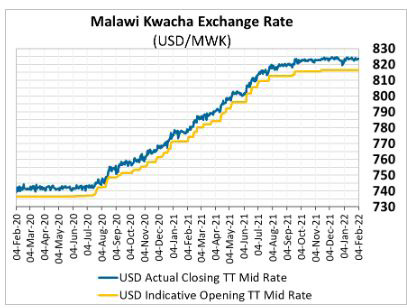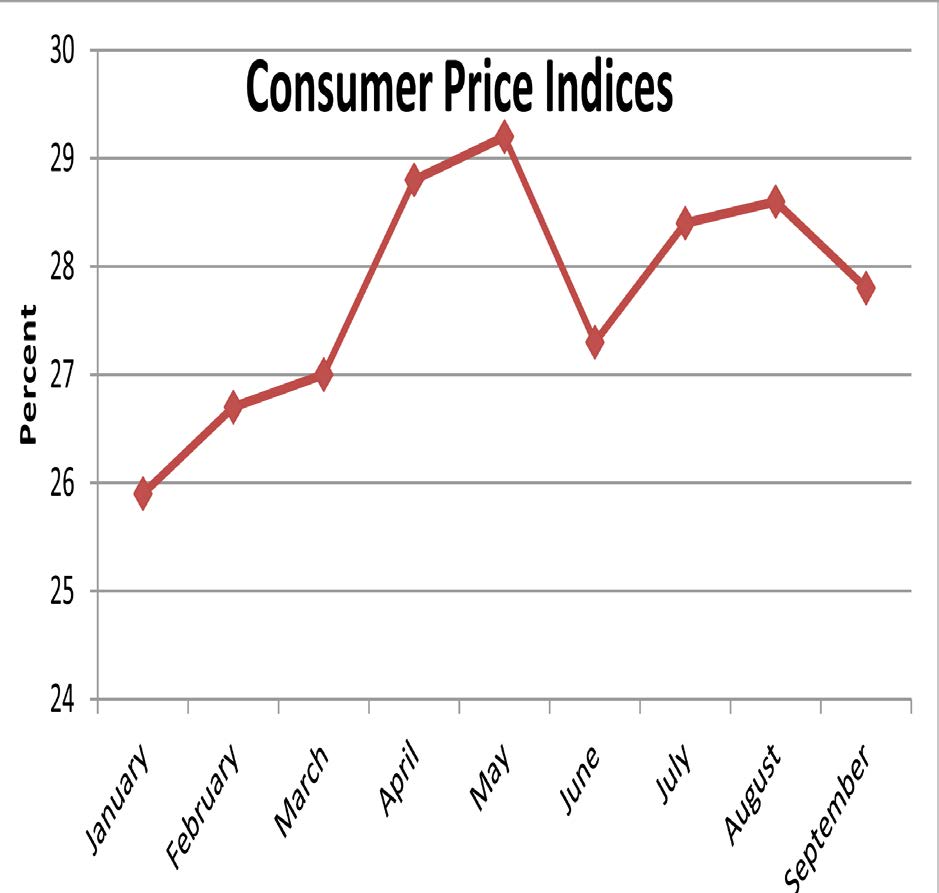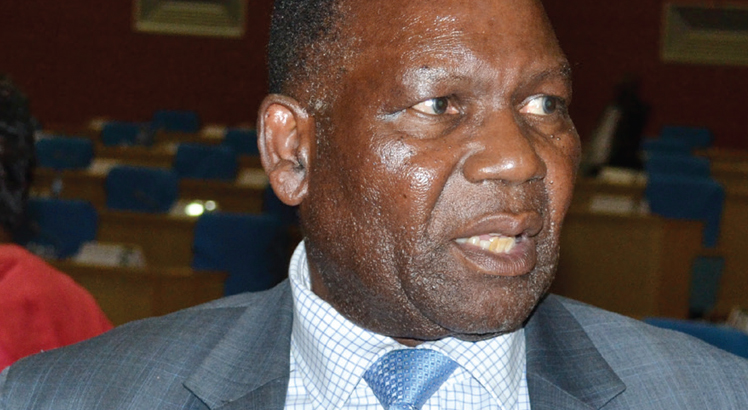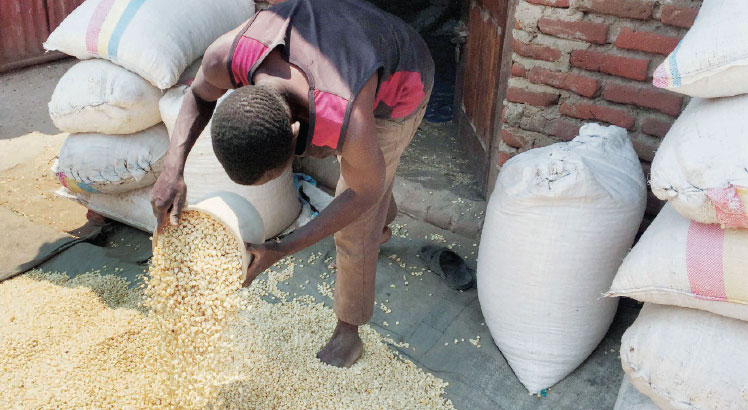Devaluation to stir price spiral
The 44 percent devaluation of the kwacha and subsequent increases in prices of fuel, electricity and other basic items could cause inflation to spiral and dampen the Reserve Bank of Malawi’s (RBM) target on prices.
Economic experts say the development could dash the central bank’s hopes of attaining a 28.3 percent average inflation rate target by the end of this year.

Currently, Malawi’s year-on-year inflation rate is at 27.8 percent, a decline from the 28.6 percent recorded in August 2023, according to the National Statistical Office data.
Speaking in an interview on Tuesdy, economist Exley Silumbu said if the currency has been floated under forex scarcity, there will be further depreciations, inflation spiral and monetary tightening through higher interest rates.
He said: “This triplet race can be subdued only if the new arrangements are considered to be credible by market participants.
“Hopefully positive International Monetary Fund decision will enhance this credibility and establish forex market stability.”
Consumers Association of Malawi executive director John Kapito said on Tuesday that the weakening of the kwacha has brought in other serious economic triggers such as fuel and electricity tcould exacerbate inflation pressures.

He said: “It is extremely hard to control inflation when prices are increasing and form part of the inflation basket.
“Whatever figure on inflation that will be released will not reflect what is happening on people’s incomes and expenditure. The devaluation and its effects has raised new economic disorder that is hard to predict.”
Speaking separately, agricultural economist Steve Kayira observed that it was expected that the exchange rate re-alignment will exert inflationary pressures already present in the economy, potentially pushing the inflation rate far beyond the earlier projected 28.2 percent.
“This is so because exchange rate movement is a critical factor in determining inflation, especially in an import-dependent economy such as Malawi,” he said.
Economist Gilbert Kachamba noted that as Malawi relies on imports for various goods, including fuel, fertiliser and other commodities, the increase in import cost will likely contribute to higher prices for the goods, which could trigger cost-push inflationcosts across various sectors.
“This cost-push inflationary pressure can result in a broad-based increase in prices for goods and services in the domestic market,” he said.
Following the trends, Kachamba said RBM will have to adjust upwards both its inflation projection and the policy rate, a key driver in determining interest rates on bank loans.
Following the 44 percent kwacha devaluation last week, Malawi Energy Regulatory Authority increased fuel prices with petrol rising by 40.9 percent from K1 746 to K2 530 per litre while diesel rose by 42 percent from K1 920 to K2 734 per litre.
The energy regulator also increased electricity tariffs by 40.92 percent from K123.26 per kilowatt hour (kWh) to K173.70 per kWh.
The country’s five water boards under Water Services Association of Malawi have also disclosed that they will meet government officials this week to propose a 44 percent water tariff hike to enable the utilities meet operational costs.
After a month of stable prices, maize, which has a weight of 53.7 percent in the consumer price index, has seen its prices begin to escalate, peaking at K883 per kilogramme (kg) or K44 500 per 50 kg bag.
Consequently, prices of most goods, including sugar, soft drinks, transport fares, have also followed suit, adding pressure on inflation, which had started to ease in September 2023.
However, the current trends are a direct contrast to RBM’s aspiration, which following easing inflationary pressures, had revised downwards the 2023 inflation projection to 28.2 percent.
This is slightly lower than its earlier projection of 29.5 percent, but far above the central bank’s target of five percent in the medium-term on account of declining global inflation, the expected food relief plan and the impact of monetary policy on the domestic market.
RBM had earlier conceded that despite the downward revision in inflation projection, risks to the inflation outlook are tilted to the upside, including the possibility of an upward adjustment in fuel pump prices on the back of rising international oil prices, re-alignment of the exchange rate with its market clearing rate and El Nino weather forecast for the 2023/24 agricultural season.
However, in an interview on Tuesday, RBM spokesperson Mark Lungu said monetary policy stance will be determined at the next Monetary Policy Committee (MPC) meeting in January 2024 and that is where new inflation projections will be discussed.
“The 2023 inflation average may not be affected much as we only have two months that will be affected by the devaluation,” he said.
During the last MPC meeting from October 26 to 27, the central bank resolved to maintain the policy rate at 24 percent on account of the moderating inflationary pressures.
Inflation, the rate of the general rise in prices over a given period of time, has been on the rise for the past 12 months to August, largely due to increases in food and non-food items.






One Comment